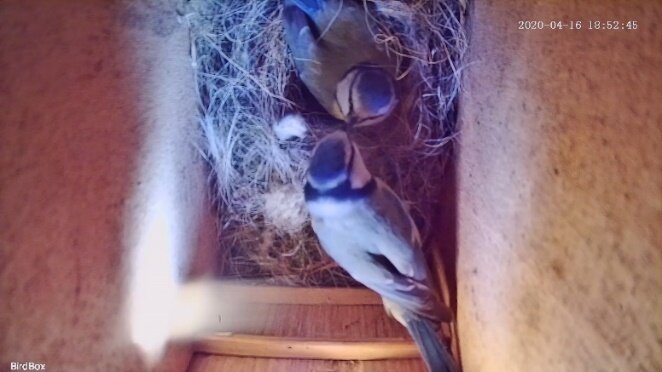Mrs Morris’ bird box has had visitors!
Hello and welcome to our weekly Forest School blog number 3.
I am very lucky to have a camera in a birdbox in my garden. We put it up for the first time this year, at the end of February and within a few days a pair of Blue tits began investigating it. Well, they moved in!
Here are 2 videos for you to enjoy.
Blue tit nest building
https://drive.google.com/open?id=1UETeeAK2k9iTT6158ooty9jBCWN1_gNk
Blue tit eggs
https://drive.google.com/open?id=1UHULY_gdGZF4-C5fsQuphpoJ7s0RNoj4
The British Garden: Life and Death on your lawn -
Chris Packham and a team of wildlife experts spend an entire year exploring every inch of interlinked back gardens. They wanted to answer a fundamental question: How much wildlife lives beyond our back doors? How good for wildlife is the great British garden?
This is a programme that you can watch on BBC iplayer. It is a little long, but is broken up into the 4 seasons, so you might want to watch in 4 parts.
https://www.bbc.co.uk/iplayer/episode/b08xyqcs/the-british-garden-life-and-death-on-your-lawn
Chlorophyll painting
The leaves of most plants are green, because the leaves are full of chemicals that are green. The most important of these chemicals is called “chlorophyll” and it allows plants to make food so they can grow using water, air and light from the sun. This way that a plant makes food for itself is called “photosynthesis” and it is one of the most important processes taking place on the whole planet.
Draw the outline of a tree on a piece of paper. Now using any young leaves, (I used dandelion) make the canopy of the tree by scrunching up the leaves and rubbing them on to your paper.
Do you get different shades of green from different leaves?
Can you use flowers in the same way?
Why not try a dandelion flower first?
Reveal a secret message
Pick a dandelion and use the white sap that oozes out of the stem to write a message on a piece of paper. You won’t see it while it’s wet, but just watch what happens as it dries!
Do you know what dandelion flowers do at night?
Butterfly Conservation Project
The Butterfly Conservation charity are working on a project local to our school. They are linking up isolated colonies of the very rare Wood White butterfly by creating lots of additional flower-rich habitat to enable the species to spread. This will in turn help many other species.
Fiona Haynes who works for the charity was hoping to visit our school this spring and summer to tell everyone about the project, and to see if there are any areas within our school grounds where we could undertake work to benefit butterflies.
As she couldn’t visit at this time, she has sent a link to her assembly.
https://drive.google.com/open?id=1o_oeCB6vO8gkCWQ0g6etibI0DmpejYzP
You may also be interested in this colouring competition that the charity has just launched.
https://butterfly-conservation.org/our-work/education/colouring-competition
Have lots of fun!
Mrs Morris







